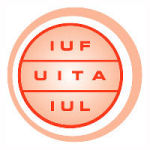New Study Highlights Explosive Growth and Dangers of Nanotechnology in Food and Agriculture
Posted to the IUF website 09-Apr-2008Share this article.
A new study by Friends of the Earth Australia, Europe and USA documents the rapid expansion, and the expanding risks, of commercial products using nanotechnology in food and agriculture. Out of the Laboratory and on to our Plates: Nanotechnology in Food & Agriculture explains the essentials of nanotechnology - the manipulation of natural and synthetic material at the atomic and molecular scale - and its current and potential future commercial applications in food processing, agriculture and packaging, highlights the known and potential risks to workplace and consumer health and safety and to the environment and links these developments to corporate control of the food supply and issues of sustainability. The publication highlights the need for full regulation of the technology and the current absence of regulations at all levels to deal with specific nanotechnologies, and includes a survey of existing commercial products. The recommendations for action closely follow those adopted by the IUF at the 25th Congress in 2007, including the call for a moratorium on the commercialization of all food products incorporating nanotechnology until their safety can be demonstrated and nano-specific regulations to protect worker and public health and the environment are in place.
In 2006/2007, the IUF drew attention to the multiple risks associated with the commercial availability of dozens of products including nanotech-based foods, food packaging, dietary supplements and pesticides. While there are no labeling requirements anywhere requiring the specific identification of nanomaterials in a product, Out of the Laboratory cites research estimating that there are now between 150-600 nanofoods and 400-500 nanofood packaging applications already on the market. The increase in such a short time has been enormous. Meanwhile, huge sums are being invested in research linked to commercial applications.
A July 2004 report of the UK Royal Society and Royal Academy of Engineering stated that "There is virtually no information available about the effect of nano-particles on species other than humans or about how they behave in the air, water or soil, or about their ability to accumulate in food chains", concluding that "Release of nano-particles should be restricted due to the potential effects on environment and human health." Research has confirmed this analysis and uncovered new dangers, yet complacency and "commercial secrecy" prevail. Many thousands of workers are involved in the manufacture and handling of these products, yet there are no specific safety regimes in place. There currently exist no methods for even determining potential exposure levels of nanoparticles in the workplace. There is a clear need for unions to take action, together with civil society groups engaged with the same issues.
You can download Out of the Laboratory and on to our Plates: Nanotechnology in Food & Agriculture here in both text and pdf formats.
